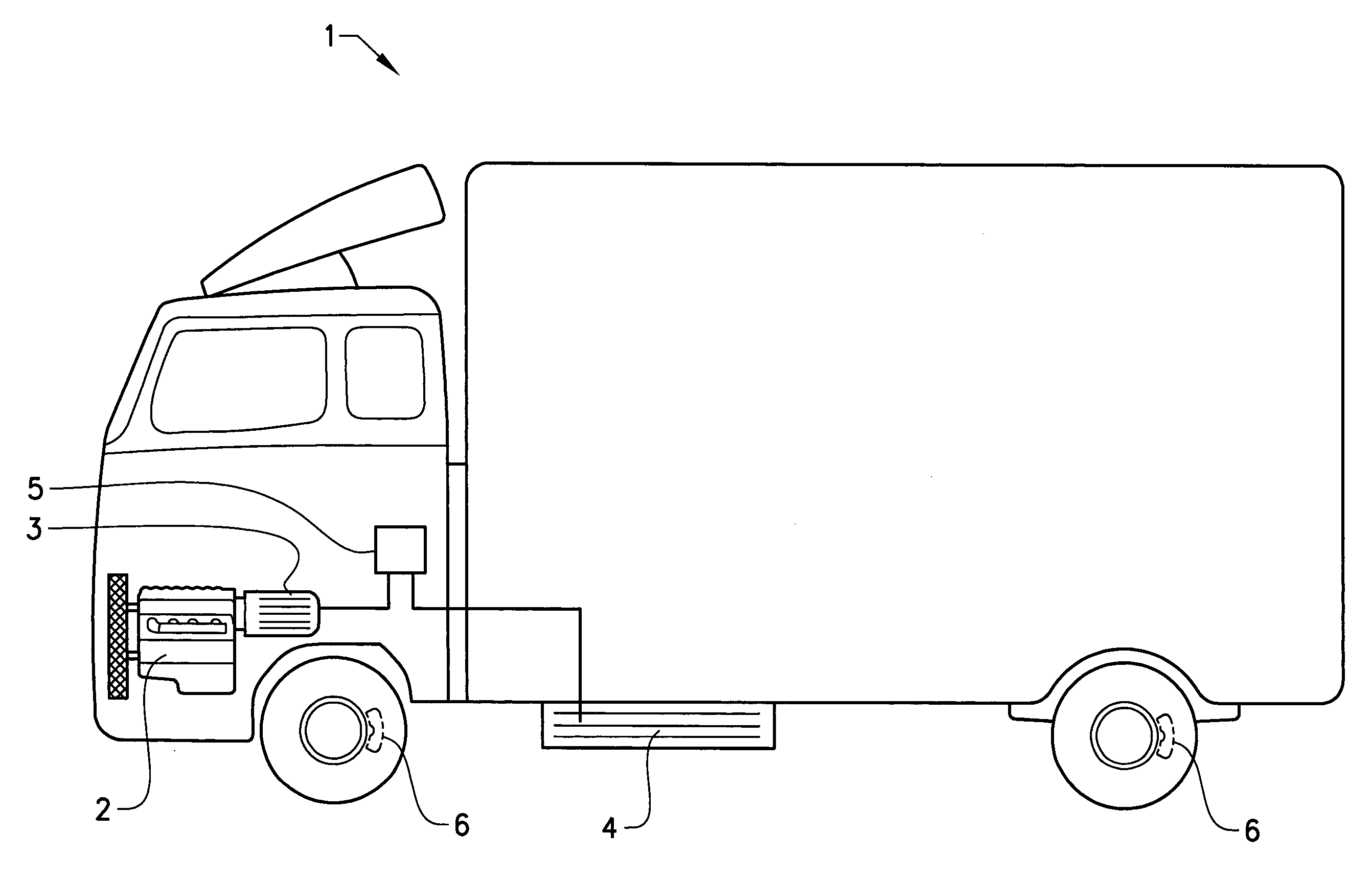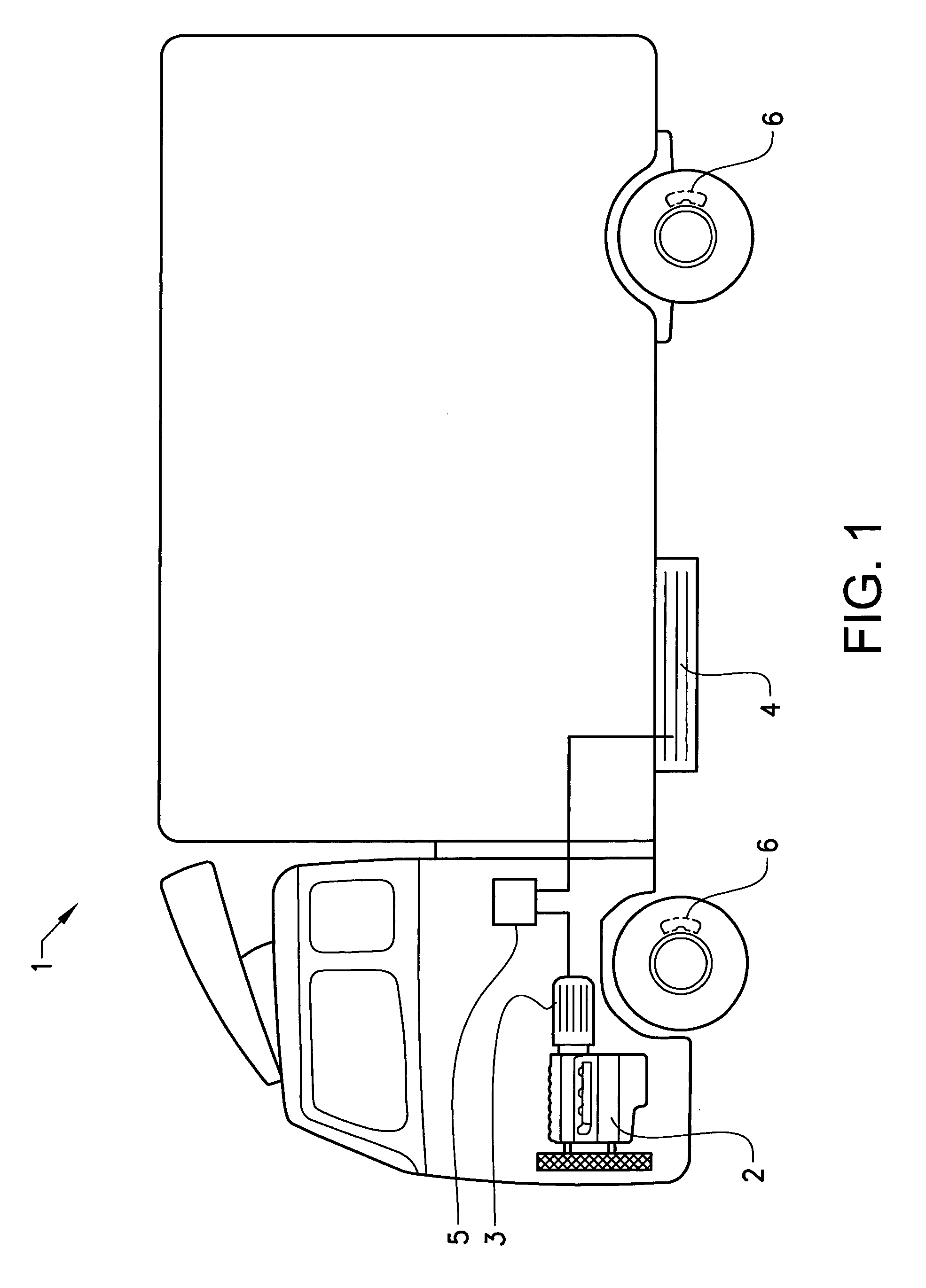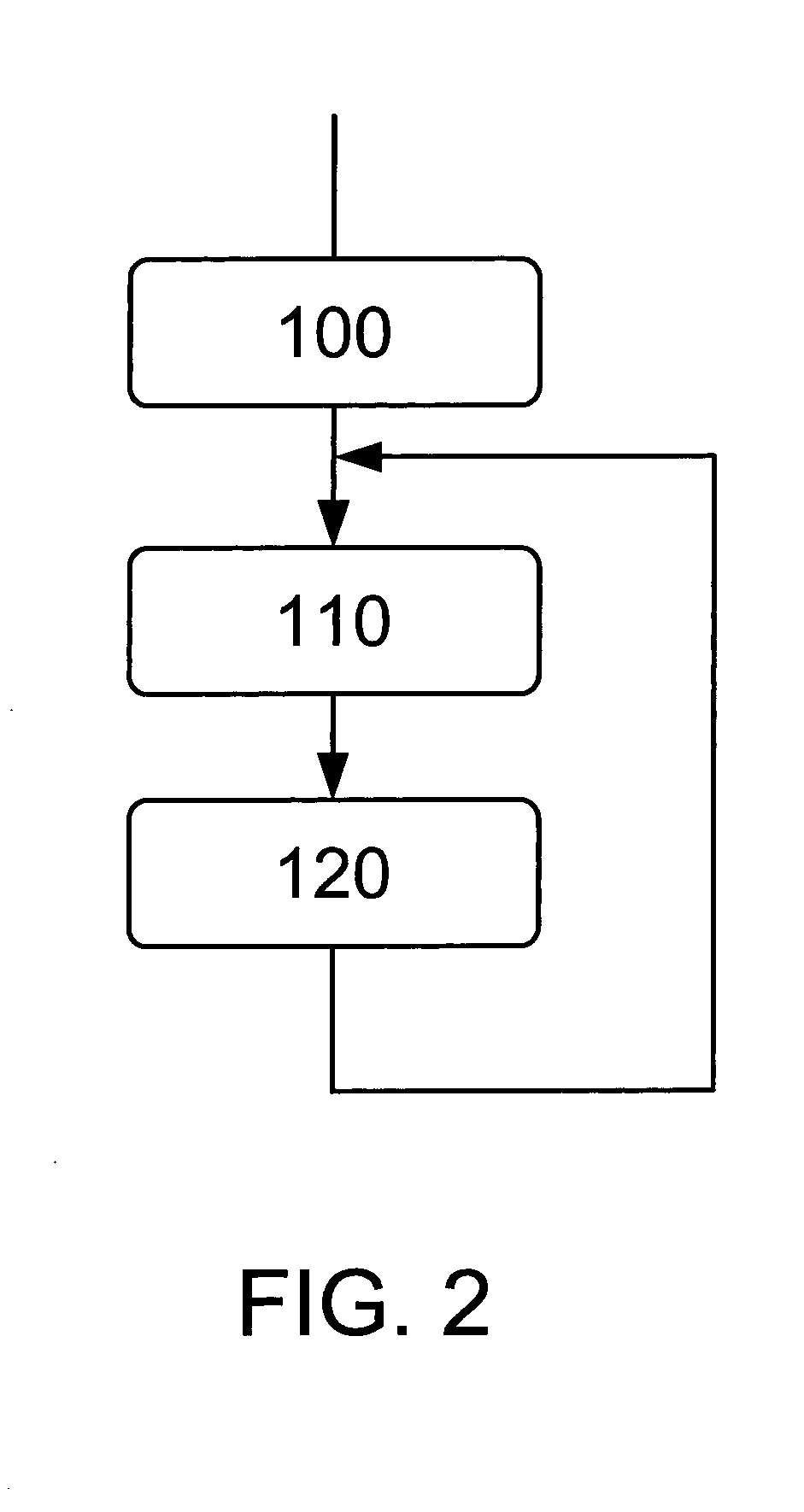Method for determining energy efficiency of an energy system in a hybrid vehicle
a technology of energy system and hybrid vehicle, which is applied in the direction of process and machine control, battery/fuel cell control arrangement, instruments, etc., can solve the problems of only being able to test and verify the system, unable or impossible to manufacture an electrical component within a specified tolerance, and only being able to fully assembled
- Summary
- Abstract
- Description
- Claims
- Application Information
AI Technical Summary
Benefits of technology
Problems solved by technology
Method used
Image
Examples
Embodiment Construction
[0025]The embodiments of the invention with further developments described in the following are to be regarded only as examples and are in no way to limit the scope of the protection provided by the patent claims.
[0026]FIG. 1 shows a schematic hybrid vehicle 1, here shown as a delivery truck. The hybrid vehicle may be a regular hybrid vehicle or a plug-in hybrid vehicle. Other types of heavy hybrid vehicles such as buses., refuse vehicles, wheel loaders etc. can also be used with the inventive method. The hybrid vehicle is provided with a combustion engine 2, normally a diesel engine but other types of fuels, such as liquefied natural gas or compressed natural gas, can of coarse also be used. The hybrid vehicle is also provided with an electric machine 3 connected to the engine. The electric machine is preferably positioned close to the engine but can also be placed apart from the engine, e.g. at the drive axle of the vehicle. The vehicle is provided with service brakes 6 on all whe...
PUM
 Login to View More
Login to View More Abstract
Description
Claims
Application Information
 Login to View More
Login to View More - R&D
- Intellectual Property
- Life Sciences
- Materials
- Tech Scout
- Unparalleled Data Quality
- Higher Quality Content
- 60% Fewer Hallucinations
Browse by: Latest US Patents, China's latest patents, Technical Efficacy Thesaurus, Application Domain, Technology Topic, Popular Technical Reports.
© 2025 PatSnap. All rights reserved.Legal|Privacy policy|Modern Slavery Act Transparency Statement|Sitemap|About US| Contact US: help@patsnap.com



